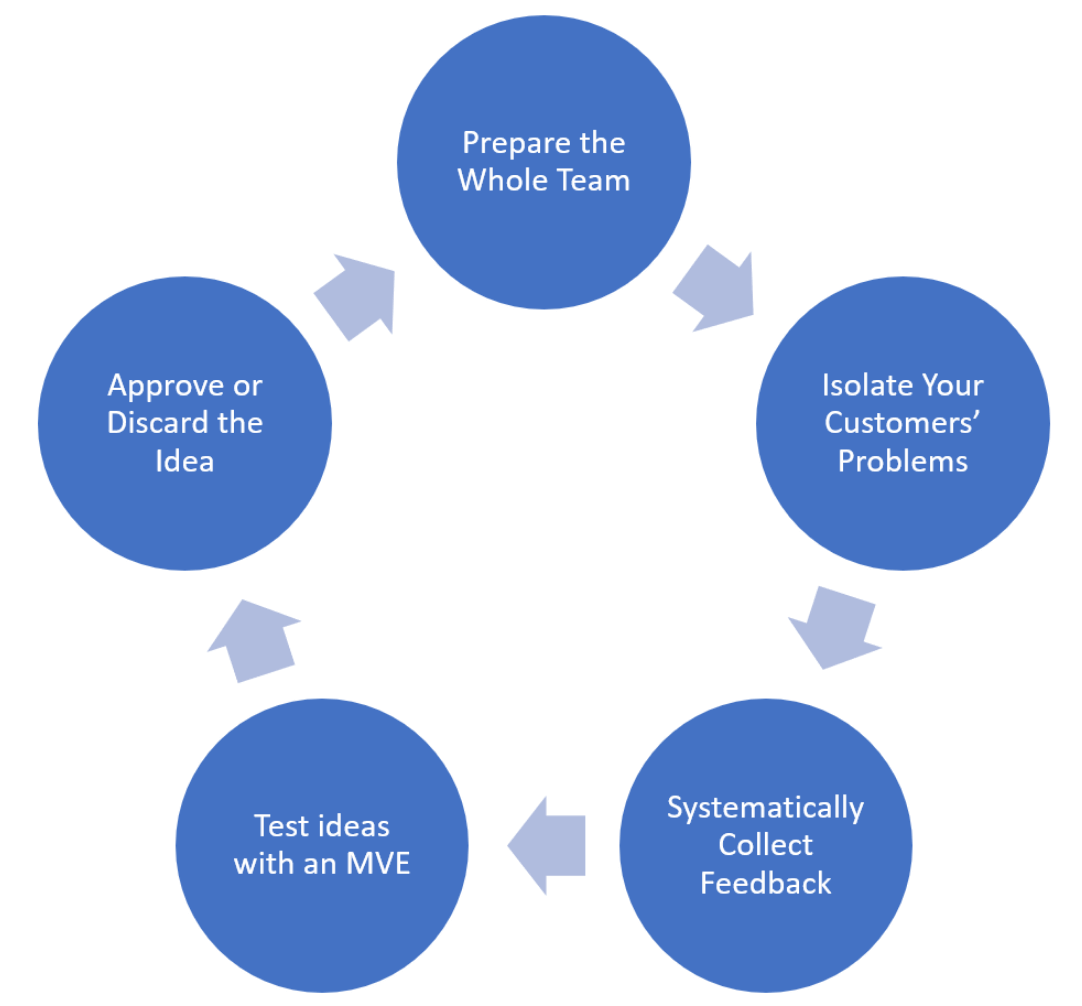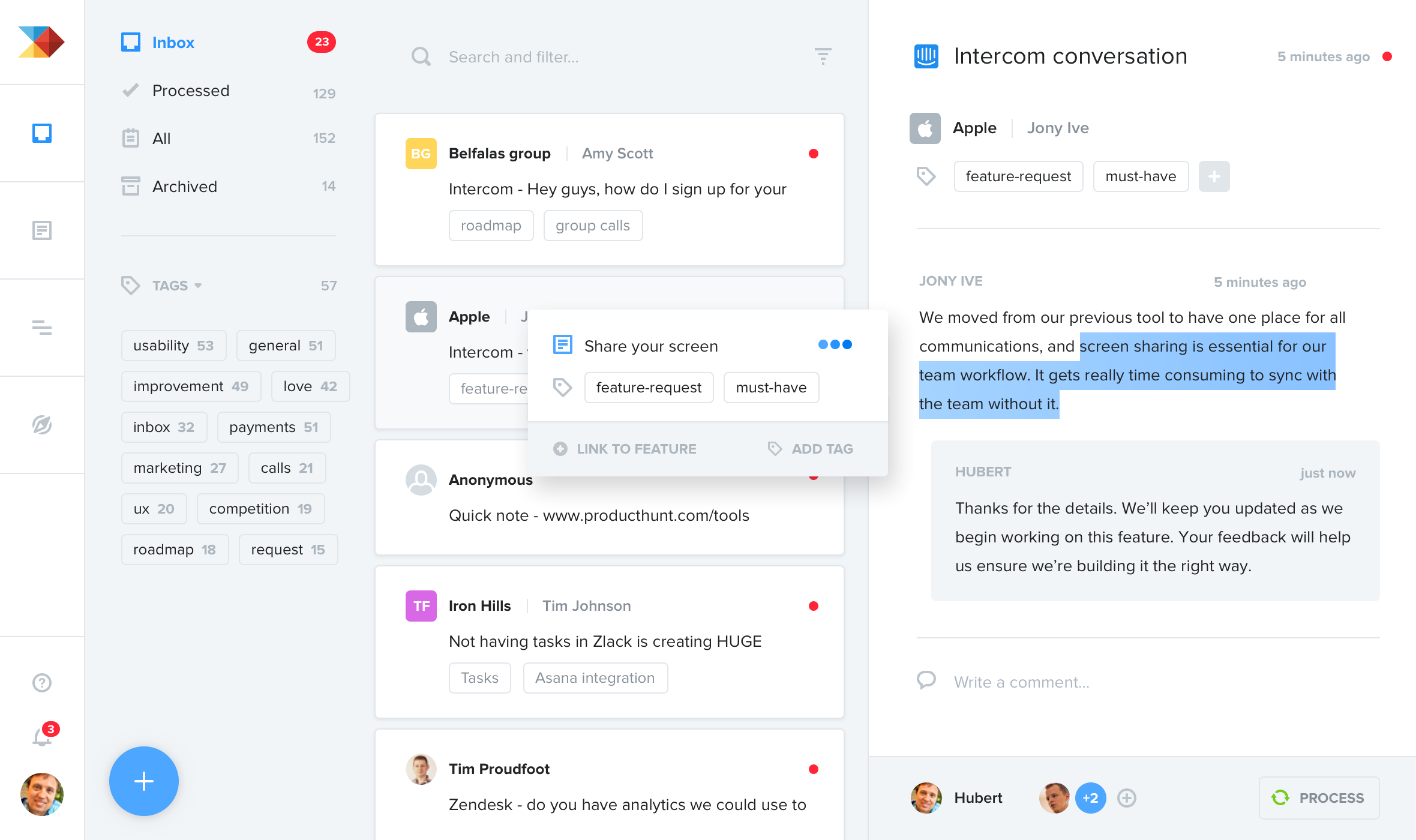6 steps for conducting better product discovery

In Hiten Shah’s article, My Billion Dollar Mistake, he writes about the process of creating KISSmetrics, which became a successful company that helped push the analytics category forward. However, before KISSmetrics, he encountered a few significant obstacles when starting previous companies.
His first product was an analytics platform for Facebook App Developers. His target audience loved the product, but there was one problem. Customers couldn’t afford it, and it failed. His second product was a business intelligence tool that allowed companies to create customizable dashboards of business metrics. But it failed because it required too much customization. Users weren’t willing to spend the time needed to set up their dashboards.
After his second product, Hiten took the time to think, research, and react to what his potential audience wanted. He started by focusing on learning as much as he could about them. He talked to people and identified their actual need — getting more data from website visitors to improve website conversion rates.
Based on these conversations, Hiten and his team created the Minimum Viable Product for KISSmetrics, which ended up becoming an incredibly valuable marketing tool for website analytics. So why did Hiten’s third attempt succeed, while his first two didn’t? He and his team took a step back to truly understand who his target customers were and what their actual needs were, as opposed to beginning development with a variety of assumptions. Those lessons serve as a foundation for a new approach to product discovery.
For many, product discovery may seem like an obvious process of talking to customers, combining that feedback with what they already know, and then prioritizing those items based on some kind of ranking. But to engage in real product discovery, you need to know your customers fully and also test your ideas to make sure it’s the right product for what they need. This will help you identify and build products that truly delight your customers.
The real product discovery cycle
Think of product discovery as a cycle, because it’s not a one-and-done process. It’s a constant work in progress with continuous improvements.
- The cycle always starts with putting a team together to learn about your customers. Your customer insights need to come from holistic research.
- As you start hearing from you customers, isolate their problems. Ignore the solutions for now.
- Next, collect all the feedback you hear from customers. Do this in an organized, systematic way.
- Then, test the idea with a Minimum Viable Experiment — notice this isn’t an MVP.
- Finally, decide on your product idea, and start the process over.

Let’s get into the specifics of each step of the product discovery process.
1. Prepare the whole team
Truly in-depth product discovery means you need to understand your customer holistically. Your customers are nuanced and have different needs and characteristics based on who is thinking about them. For example, when talking to customers:
- Product managers may develop use cases.
- Product marketers may quantify willingness to pay.
- UX researchers may construct workflows and journeys.
- Engineers may analyze technical capabilities.
- Designers may assess usability.
Understanding your customer requires involving your whole team. It’s not enough to have one person do some research on your customers, fill in the blanks with their best guess, and then present their “findings” to the team.
Everyone, including the roles mentioned above, and perhaps more, should join in on user observation, interviews, and surveys — even if they’re just silently listening and watching. This benefits you because everyone will have different experiences, different reactions, and different interpretations of customers’ pain points. Otherwise, you may miss important information and insights.
2. Isolate your customers’ problems
As a product manager, you’ve likely heard this many times, but when listening to customers, it’s crucial to avoid getting stuck on the solution to the problem. Pay attention to the problem itself.
This can be tough because you’re going to constantly hear solutions from your customers while you’re talking to them. “If only your product would do X.” You’ll probably hear solutions from your sales team too. “We can close this deal if we add X to the product.”
As you and your team engage your customers and prospects, you have to ignore those solutions for now and isolate the problem.
For example, imagine a department head managing expense reports for the entire company where she works. She sends a request saying that she needs to export reports to Google Sheets. However, when asked why, she says she needs to be able to compare her department’s spending against others at her company. Her problem is that she doesn’t know if her department spends too much, which you might imagine may be a common problem.
So instead of building the export feature, the expense app developer may instead choose to build a more value-add feature, such as a dashboard that offers her a view into department’s spending relative to other departments in real-time.
Great products, most of the time, come from addressing root problems in systematic ways — not from quickly hacking up band-aids in response to suggestions that you get from your customers. For more ideas on how to get to these root problems, you can read about how we approach it.
3. Collect feedback in a systematic way
The next step in product discovery is to collect and organize feedback from your customers.
The problem with collecting insights from customers is that it can be overwhelming. You’ll have feedback in all sorts of places — email, social media, website chat, customer service, and sales calls. When this information isn’t organized, it’s tough to spot trends and identify patterns. You could organize it in a spreadsheet, but that can quickly get overwhelming.
A tool that connects to all of these services can automatically add insights into a research repository.

From there, your tool should help you spot trends, identify customer problems, and tie them to related feature ideas. If you don’t have a clear way to tie feedback it to specific feature ideas, it’s hard to prioritize and prove the worth of that feature idea.
4. Test ideas with an MVE
Now you’re ready to build the thing your customer wants, right?
Actually, no. There’s another step when you’re doing solid product discovery. Some people call it a Minimum Viable Experiment.
The goal is to test the concept of your new feature before you devote development time. Your MVE should take minimal time to create, use minimal resources, but still tell you something about your potential feature.
What sort of things can fall in this category?
- Mockups A visual design of your feature idea can help your users understand the purpose of it. Make sure you collect useful feedback from your users when you share this mockup with them. Don’t just share it with them and say, “What do you think?” Instead, ask thoughtful questions. “Do you think this feature would reduce your time to do X?”
- Surveys This can be paired with a mockup or live on its own. The idea is to ask thoughtful questions to your users, collect their feedback, and draw conclusions.
- Fake Door Testing “Plus” Some friends of mine wanted to see if anyone was interested in buying “customized” granola online. So they built a low-quality website where users could say what they wanted in their granola. Then, they used Google ads to send traffic to it. When users bought something, my friends went to the local grocer and shipped it to them. It gave them great insight in how many folks would be interested in it.
5. Move forward or scrap the idea
Now that you’ve made it here, you should know enough about the feature idea to decide on whether it’s good or not.
With product discovery, there are going to be a lot of ideas that don’t make the cut — possibly more than you expect. Don’t get discouraged, though. That means that you’re on the right track.
It’s much better to discard an idea at this point than when your team dives into development.
6. Iterate the whole thing
What’s next? You’ve determined your feature idea has potential, or maybe it doesn’t. Either way, the next step is to start over from the very beginning.
If you scrapped the feature, you might need to ask different questions during customer research. Or, you might need to re-evaluate if you’re really isolating the customer’s problem. If you built it, then assess how customers are using it.
Remember, product discovery is an on-going process, a craft. As we strive for Product Excellence, we have to keep coming back to customer feedback or deep user insights. It’s the foundation for how we build, not only a great product, but also a product-led culture that keeps delivering great products.
productboard helps you manage your insights. Sign up for a free trial to see how!





![The CPO’s Blueprint for Annual Planning: An Opportunity to Drive Change [Part 3]](https://www.productboard.com/wp-content/uploads/2024/11/strategy-blueprint-560x293.png)
